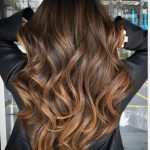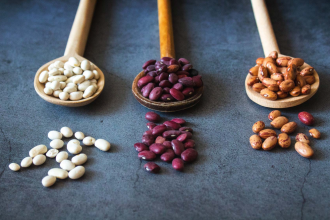The beauty industry is rapidly evolving, driven by shifts in societal values, technological advancements, and diverse consumer demands. The definition of beauty has become more inclusive and expansive, far removed from the singular ideals of the past. Brands and consumers alike are navigating this transformation, reshaping notions of attractiveness and self-expression. This blog will explore the implications of new beauty standards for both consumers and brands, outlining how these changes are influencing product development, marketing strategies, and consumer behavior.
Hair Standards
Hair has long been a critical element of beauty standards, often reflecting broader cultural and societal trends. In the past, certain hair types, colors, and styles were deemed desirable based on narrowly defined beauty ideals. However, contemporary beauty standards are increasingly celebrating diversity, encouraging individuals to embrace and express their natural hair textures and colors. The team behind Roxy Hair says that hair extension sales have been steadily increasing as more women opt for longer and fuller hair, while others are choosing to cut their hair short or go completely natural. This shift has ushered in a broader range of hairstyles and products, catering to different hair types and needs.
Makeup Trends
Makeup trends are also undergoing a significant transformation as consumers and brands prioritize individuality and self-expression over traditional beauty norms. The “no-makeup” makeup look, which emphasizes natural beauty by enhancing rather than masking features, has gained immense popularity. This trend has led to the rise of products such as tinted moisturizers, brow gels, and sheer lip tints that create a polished yet understated appearance.
Bold and artistic makeup styles have found their place on runways and social media, showcasing vibrant colors, glitter, and unconventional designs that break free from conventional boundaries. Inclusivity in makeup ranges has become a crucial focus, with brands expanding their foundation shade ranges to cater to a diverse array of skin tones. This inclusive approach not only reflects changing beauty ideals but also fosters a sense of belonging and representation among consumers.
Brand Adaptation and Innovation
In response to evolving beauty standards, brands are increasingly embracing adaptation and innovation to remain relevant and meet diverse consumer expectations. Understanding that a one-size-fits-all approach is no longer adequate, many companies are investing in extensive research and development to create products tailored to a wide variety of needs and preferences. This includes formulating products with clean, ethical ingredients, and ensuring they cater to different skin types, tones, and hair textures.
Brands are leveraging technology to enhance personalization in beauty routines. The use of AI and machine learning allows for the creation of customized skincare regimens and virtual try-on experiences, enabling consumers to find products that best suit their characteristics and preferences.
Sustainability has also become a key focus, with many brands committing to environmentally friendly practices, such as eco-friendly packaging and cruelty-free testing methods. These efforts not only appeal to the ethically conscious consumer but also demonstrate a brand’s commitment to social responsibility.
The Role of Social Media and Influencers
Social media platforms have become powerful tools in shaping and spreading new beauty standards. Influencers, in particular, play a pivotal role in this dynamic landscape. With their vast followings and authentic connections with audiences, influencers have the unique ability to set trends, endorse products, and inspire millions.
Their content often highlights diverse beauty routines, styles, and products, making beauty ideals more accessible and relatable to various demographics. Platforms like Instagram, TikTok, and YouTube serve as visual diaries where influencers showcase their daily lives and beauty choices, influencing consumer preferences and behaviors.
Influencers also foster a sense of community, encouraging open conversations about beauty struggles, successes, and everything in between. This transparency creates a more inclusive environment where consumers feel seen and heard. Moreover, brands increasingly collaborate with influencers to co-create products that resonate with their audiences, further driving innovation and inclusivity. These partnerships often result in limited-edition product lines or collections that cater to niche markets, showcasing the evolving nature of beauty standards in a social media-driven world.
Inclusivity and Diversity in the Beauty Industry
Inclusivity and diversity have become fundamental pillars in the beauty industry, reflecting a broader societal push toward acceptance and representation. In the past, beauty standards were predominantly shaped by narrow and often unrealistic ideals, which marginalized many groups based on factors like skin tone, body type, and age. However, contemporary beauty standards are shifting to recognize and celebrate unique individual attributes, fostering a more inclusive environment.
Brands now understand the importance of offering products that cater to an extensive spectrum of consumers. This is evident in the expansion of foundation ranges to include hues for every skin tone and the development of hair care products tailored for different textures and needs. Inclusive marketing campaigns are also playing a critical role, showcasing models of various ethnic backgrounds, body sizes, ages, and genders. This not only reflects society’s diversity but also empowers consumers by validating their unique beauty.
The evolving beauty standards are shaping the industry in exciting and inclusive ways. From diverse hair standards to personalized makeup trends, brands are adapting and innovating to meet consumer demands for inclusivity, representation, and self-expression. Social media and influencer culture also play significant roles in this transformation, highlighting the power of community-driven beauty ideals. As we continue on this journey towards more diverse and inclusive beauty standards, brands need to listen to their consumers’ needs and embrace change to stay relevant in an ever-evolving industry.














